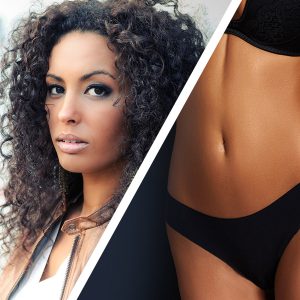 Whether conducted alone or in conjunction with another procedure, fat grafting can help smooth lines and wrinkles, minimize signs of scarring or other skin injuries, and improve the volume and/or contour of facial features such as the lips, chin, and cheeks. Additionally, it can be employed to enhance the size and/or shape of the breasts and buttocks, as well as to help reconstruct the breasts after lumpectomy or mastectomy.
Whether conducted alone or in conjunction with another procedure, fat grafting can help smooth lines and wrinkles, minimize signs of scarring or other skin injuries, and improve the volume and/or contour of facial features such as the lips, chin, and cheeks. Additionally, it can be employed to enhance the size and/or shape of the breasts and buttocks, as well as to help reconstruct the breasts after lumpectomy or mastectomy.
Also known as fat transfer or fat injections, this innovative procedure utilizes the patient’s own fat, which is generally obtained via liposuction from the hips, abdomen, thighs, or other regions of the body that have an ample accumulation of fatty tissue. Since the fat is harvested from the individual’s own body, allergy testing is not required prior to treatment. Furthermore, unlike various other volumizing injectables and fillers, results from fat grafting can last many years—sometimes permanently.
Determining Candidacy for Fat Grafting
To determine if you are a good candidate for fat grafting, Dr. Lorri Cobbins or Dr. Brian Braithwaite will perform a thorough physical examination and review your medical history. Your doctor will then carefully listen to your aesthetic concerns and evaluate whether you have enough excess fatty tissue in one (or multiple) areas of the body to safely and effectively transfer. If it is decided that this procedure is right for you, your surgeon will comprehensively explain how the treatment is performed, what type of recovery can be expected, what kind of results can potentially be achieved, and any other applicable details.
The Fat Grafting Procedure
Depending on the patient’s specific needs, fat grafting at The Aesthetic Institute of Chicago can be performed under local or general anesthesia. Dr. Braithwaite or Dr. Cobbins will discuss both of these options at the time of the consultation to determine the most appropriate approach for minimizing potential discomfort. During the actual procedure, liposuction will first be performed to remove fat tissues for transfer, which provides the additional benefit of body contouring in the particular donor site. Once extracted, harvested fat will be carefully filtered, cleansed, and reinjected into targeted areas of the body/face using a sterilized needle and special cannula.
Recovery from Fat Grafting
Following the procedure, some minor swelling and/or bruising may be present in the treatment and donor areas, though these effects generally subside relatively quickly. The majority of individuals experience a mild to moderate amount of discomfort, but this can be easily controlled with medication. Most normal daily routines—such as office jobs, running errands, etc.—can usually be resumed after approximately seven days. However, strenuous activities like heavy lifting, intense cardio, and physical sports should be avoided for a minimum of several weeks. It is common for the area(s) that received fat transfer to appear slightly more augmented than expected initially, but this is because a small percentage of fat tissue will be reabsorbed by the body. The final results should align closely with your aesthetic goals for a beautiful, natural-appearing contour.
Fat Grafting FAQs
Our doctors have provided answers to several frequently asked fat grafting questions to help you learn more about this innovative cosmetic technique:
Q: What if I don’t have one area of the body that has enough excess fat for transfer?
A: If there is not one region of the body that hosts a sufficient amount of fat for transfer, liposuction can often be performed in multiple areas until enough fat tissue is obtained. Some of the most common donor sites from which fat is extracted include the abdomen, back, hips, and thighs.
Q: How much fat will be reabsorbed after transfer?
A: For most patients, approximately 30%–40% of transferred fat will eventually be reabsorbed by the body. To account for this reabsorption, Dr. Cobbins and Dr. Braithwaite generally inject extra fat into the targeted treatment area. Ultimately, the results achieved via fat transfer can be exceptionally natural looking and feeling, and the outcomes are permanent in many instances.
Q: How much does fat grafting cost?
A: The total cost of fat grafting will depend on a variety of different factors, including the quantity of fat that needs to be extracted and reinjected to effectively achieve one’s aesthetic goals. Since every fat grafting procedure is personalized to meet the needs and desires of the individual, a custom price quote can be provided after our doctors have performed a physical evaluation and formulated a unique treatment plan at the time of the consultation.
Q: Can fat grafting be combined with other cosmetic procedures?
A: Fat grafting can be used to enhance and/or complement the results of numerous other cosmetic treatments. Some of the most common procedures performed in combination with fat transfer include facelift surgery, breast augmentation, breast reconstruction, and buttock augmentation. In addition, fat injections are often paired with dermal fillers and injectables for those seeking to address wrinkles, volume loss, and other signs of aging without undergoing facial surgery.
If you have any additional questions, or if you are interested in fat grafting and would like to schedule a consultation with one of our board-certified plastic surgeons, please do not hesitate to contact us today.
